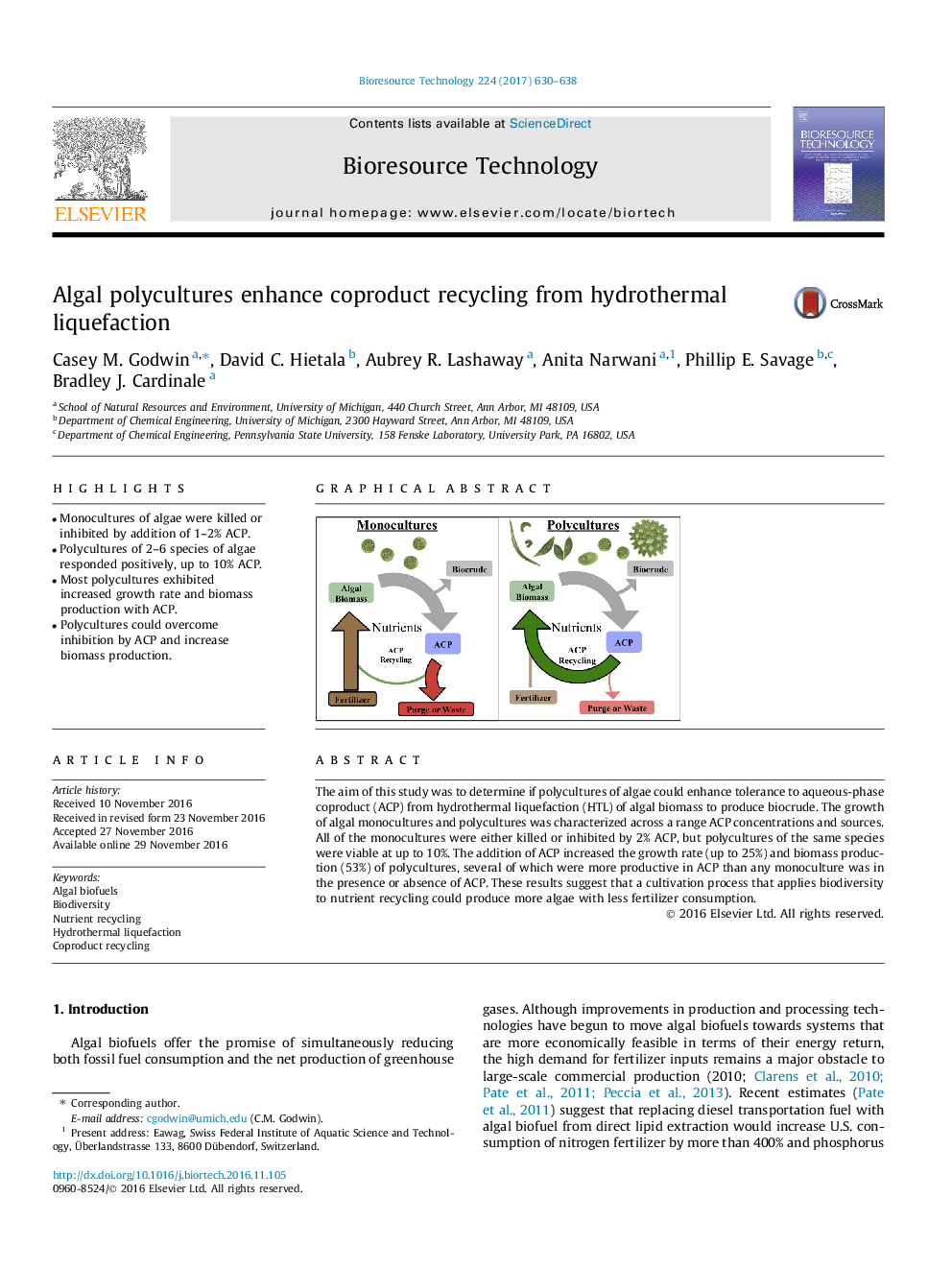| Article ID | Journal | Published Year | Pages | File Type |
|---|---|---|---|---|
| 4997885 | Bioresource Technology | 2017 | 9 Pages |
•Monocultures of algae were killed or inhibited by addition of 1–2% ACP.•Polycultures of 2–6 species of algae responded positively, up to 10% ACP.•Most polycultures exhibited increased growth rate and biomass production with ACP.•Polycultures could overcome inhibition by ACP and increase biomass production.
The aim of this study was to determine if polycultures of algae could enhance tolerance to aqueous-phase coproduct (ACP) from hydrothermal liquefaction (HTL) of algal biomass to produce biocrude. The growth of algal monocultures and polycultures was characterized across a range ACP concentrations and sources. All of the monocultures were either killed or inhibited by 2% ACP, but polycultures of the same species were viable at up to 10%. The addition of ACP increased the growth rate (up to 25%) and biomass production (53%) of polycultures, several of which were more productive in ACP than any monoculture was in the presence or absence of ACP. These results suggest that a cultivation process that applies biodiversity to nutrient recycling could produce more algae with less fertilizer consumption.
Graphical abstractFigure optionsDownload full-size imageDownload high-quality image (146 K)Download as PowerPoint slide
